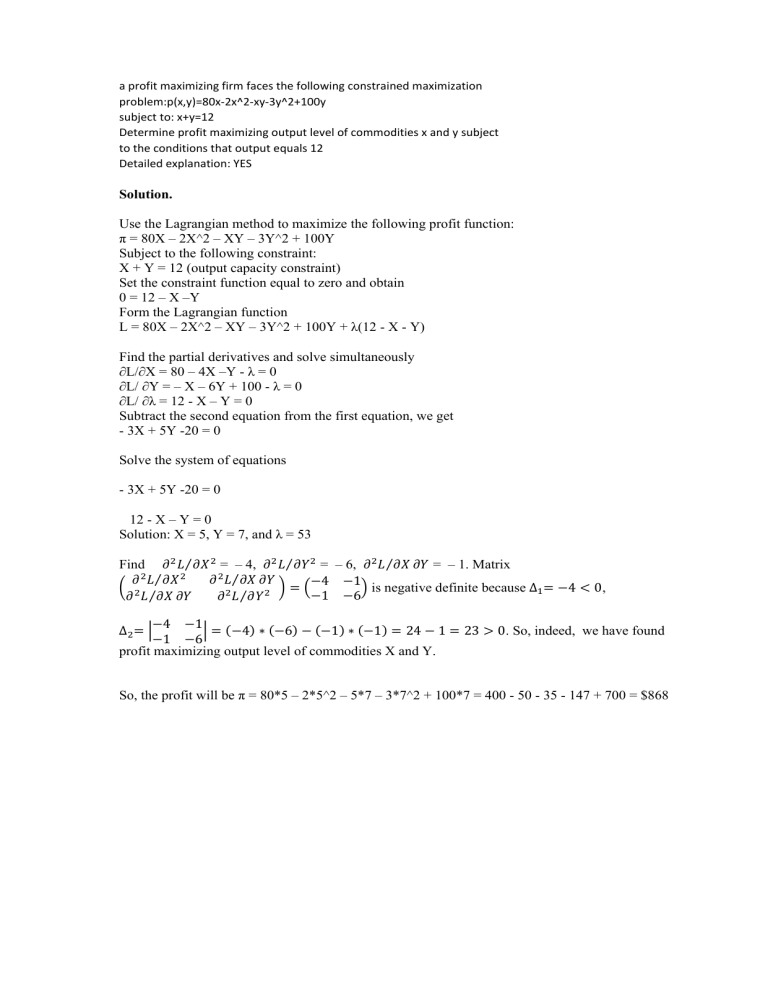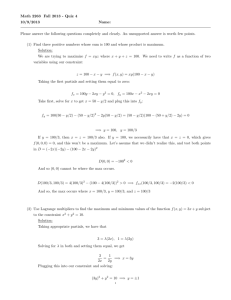
a profit maximizing firm faces the following constrained maximization problem:p(x,y)=80x-2x^2-xy-3y^2+100y subject to: x+y=12 Determine profit maximizing output level of commodities x and y subject to the conditions that output equals 12 Detailed explanation: YES Solution. Use the Lagrangian method to maximize the following profit function: π = 80X – 2X^2 – XY – 3Y^2 + 100Y Subject to the following constraint: X + Y = 12 (output capacity constraint) Set the constraint function equal to zero and obtain 0 = 12 – X –Y Form the Lagrangian function L = 80X – 2X^2 – XY – 3Y^2 + 100Y + λ(12 - X - Y) Find the partial derivatives and solve simultaneously ∂L/∂X = 80 – 4X –Y - λ = 0 ∂L/ ∂Y = – X – 6Y + 100 - λ = 0 ∂L/ ∂λ = 12 - X – Y = 0 Subtract the second equation from the first equation, we get - 3X + 5Y -20 = 0 Solve the system of equations - 3X + 5Y -20 = 0 12 - X – Y = 0 Solution: X = 5, Y = 7, and λ = 53 Find 𝜕 2 𝐿⁄𝜕𝑋 2 = – 4, 𝜕 2 𝐿⁄𝜕𝑌 2 = – 6, 𝜕 2 𝐿⁄𝜕𝑋 𝜕𝑌 = – 1. Matrix 𝜕 2 𝐿⁄𝜕𝑋 2 𝜕 2 𝐿⁄𝜕𝑋 𝜕𝑌 −4 −1 ) is negative definite because ∆1 = −4 < 0, ( 2 )=( 2 2 −1 −6 𝜕 𝐿⁄𝜕𝑋 𝜕𝑌 𝜕 𝐿⁄𝜕𝑌 −4 −1 | = (−4) ∗ (−6) − (−1) ∗ (−1) = 24 − 1 = 23 > 0. So, indeed, we have found −1 −6 profit maximizing output level of commodities X and Y. ∆2 = | So, the profit will be π = 80*5 – 2*5^2 – 5*7 – 3*7^2 + 100*7 = 400 - 50 - 35 - 147 + 700 = $868


